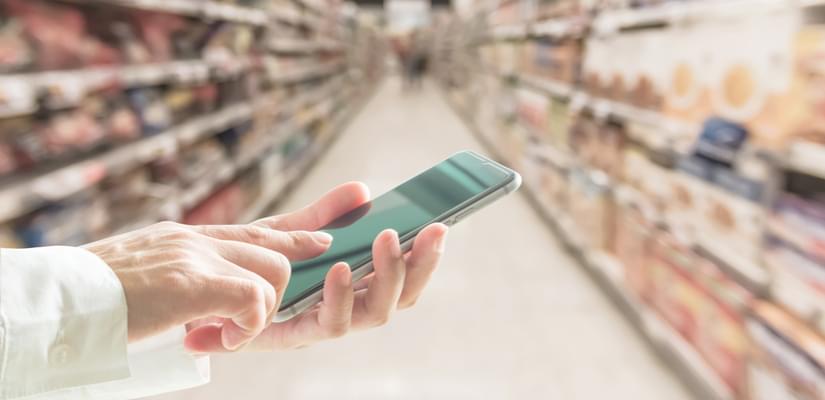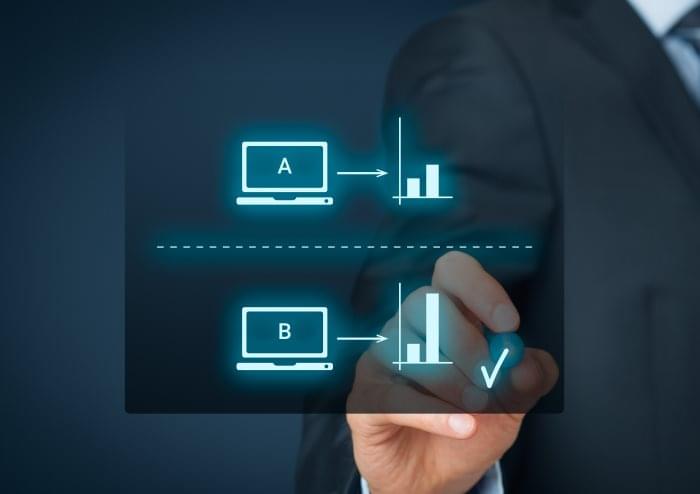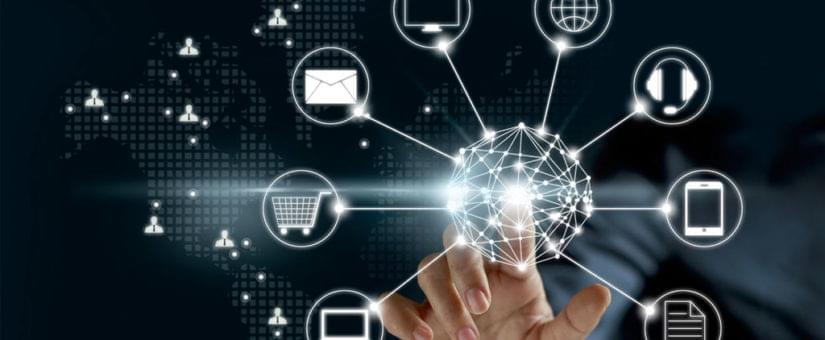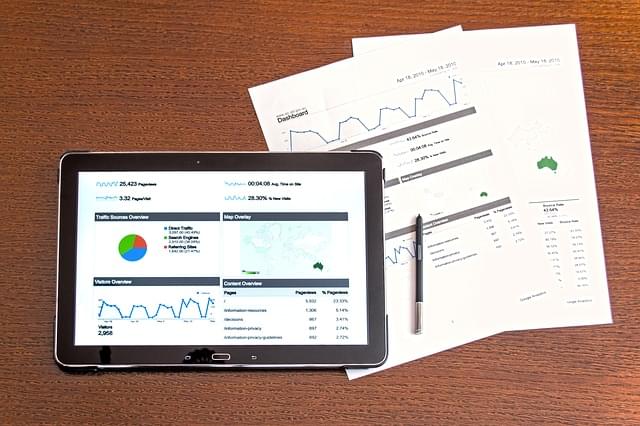It’s no longer debatable that omni-channel marketing is a powerful strategy for marketers interested in optimizing the customer journey. There are many different approaches to omni-channel, and the benefits go beyond marketing. However, first impressions typically matter most when it comes to offering a positive, personalized customer journey, and that’s why marketers tend to benefit so significantly from omni-channel. There are also tons of examples of how omni-channel marketing is already being used. Not every strategy is going to completely help solve what your business needs, either. By looking at these five use-cases of effective omni-channel marketing in action, you can pick and choose what might work and what won’t so you can start optimizing your own marketing strategy to meet the demands of today’s consumer.
We’ve written about omni-channel in the past, but back when it was becoming a major trend and not necessarily the standard. However, omni-channel is more than just a fad that your business has the option of looking past -- even if you’ve been around for a while now. People are looking for personalized customer experiences, and they’re starting to differentiate businesses from the experience they receive versus the products they sell. Let’s look at some statistics that back this up because this is a serious game-changer in the business world. Customers have more power than ever before, so we need to really hammer down the point that your marketing strategy has to reflect these changes.
Statistics speak volumes, but let’s now take a closer look at how omni-channel marketing is already being used. Some businesses are already starting to incorporate CRM into their omni-channel strategies. Here, you'll see how the top companies implement it and how you can incorporate omni-channel into your marketing strategy as well.
Allowing customers to speak with reps directly instead of going to the other channels is, in fact, an example of omni-channel marketing that also helps to streamline the buyer’s journey. It allows customers to receive a personalized experience instead of sitting through the contact center menus. The journey is streamlined by allowing agents to reach customers directly instead of having the customer go through hoops and hurdles to find an agent that may or may not be able to help. If a customer needs help, and an agent sees their help can be of service, they can take the initiative and offer a personalized experience. Virgin’s omni-channel marketing experience comes in the form of offering positive customer experiences. When problems occur with airlines, the impacts are hard-felt and can leave a lasting impact on the customer. Let’s say a customer buys a plane ticket and they’re ready to take off, but they’re suddenly kicked off their flight. If they want answers fast before they miss their flight, they need to speak to someone that understands why they were kicked off. Instead of leaving the customer to their own devices, Virgin representatives can take it upon themselves to reach out to the customer and make sure they end up on that flight instead of offering them a refund. The idea that the customer journey ends after a sale is finalized is wrong. Companies don’t profit if customers constantly return their products. By offering personalized support, Virgin Atlantic can ensure purchases are finalized and customers leave happy knowing they’re being looked after. Virgin Atlantic is now incorporating social media more into their marketing strategy. “Virgin Atlantic's interactive "Looking for Linda" social campaign attracted new customers by offering exclusive rewards, garnering 15,000 entries and growing its social audience by 8,000 people.” It continues to show that the more personalized the experience, the higher the rewards. Customers don’t want to be ignored, making a point of not ignoring them is not only good business but a smart marketing strategy when your competitors have yet to jump on the bandwagon.
Oasis, like the Apple Store, gives its agents iPads capable of providing customers with useful product information while also acting as a cash register when they’re ready to finalize a purchase. Mobile cash registers help customers go in and out of the store faster and also helps to eliminate the time it takes to find a product they like and finalize the purchase. The more time a customer has to think on a product, the more time they have to second guess whether or not they actually need it. Having agents go around the store with an iPad can help in more ways than just helping people get out of the store quicker. If a person walks into the store and doesn’t find what they’re looking for, in more cases than not, that customer’s only option is to come back another day or go to a different store to find what they’re looking for. In today’s world, that customer is going to go directly to your competition or directly to Amazon who might offer a better price. However, even if Amazon offers a better price, you can stand a chance if you allow your customers to order online directly from your website and have the purchase shipped to their house. Instead of losing 25 percent of their customers, Oasis offers a powerful customer experience that helps retain customers even when the experience doesn’t go as planned. The easier it is to complete a transaction, the more likely the customer will complete it. Even after the transaction is complete, like we saw with Virgin Airlines, there’s room to improve the customer experience. Omni-channel marketing is all about putting the customer first and letting he/she determine how they want to do business. You’re simply giving them the means to do it as they please.
The Disney Magic Band is a wearable device for guests who can use it as a hotel key, as a device for storing pictures, as a FastPass for rides, and as a way to even order food, making the entire Disney experience seamless. This is one of the best examples of omni-channel marketing. One of the many features the Magic Band has is giving people estimated wait times for rides. This helps customers take advantage of the limited time they have at Disney parks. When combined with a fast past, guests can determine which rides are worth waiting for, which attractions to see in between, and where to stop for food. The entire experience is personalized to the guest’s liking. Personalized experiences are what omni-channel marketing is all about. Instead of waiting online for potentially hours on end, customers can walk around the park to visit attractions and make purchases. If they want to spend the night at a Disney resort, they can do it right from their band instead of trying to do it through their phone. Over the phone is a great way in theory, but service and wifi are always questionable depending on the provider. This eliminates any potential hold-ups that might leave guests second-guessing their purchases. The Disney Magic Band has been used since 2014. According to Statista, Magic Kingdom attendance went from 18.59 million in 2013 to 20.49 million in 2015. Now, attendance numbers are around 20.4 million. It wouldn’t be right to attribute this increase in attendance with only the Magic Band, but when people are able to navigate the parks easier, spend less time waiting on lines, avoid crowds, and book hotels and restaurant reservations easier, the overall experience is going to increase. The fact that Disney released the Magic Band 2.0 suggests that it’s here to stay, that its implementation was an overall success, and there’s still tons of room left for improvements.
Starbucks offers a powerful app that works similarly to the mobile registers Apple Stores and Oasis offers its customers, but the app does much more. When a user opens the Starbucks app, they can see what drinks and food items are on sale, they can add money to their account, they can choose whether or not they want that money to refill automatically, and they can earn points every time they make a purchase. The more purchases a customer makes, the better the rewards. The app gives customers an incentive to use it while promoting the company, which makes the most out of omni-channel marketing. Blending ads, payments, and rewards together is a unique way of using omn-ichannel to bring in customers because the app emphasizes getting something out of the entire experience. The app works very smoothly. It’s easy to figure out how much money you have on your balance. It’s also easy to see what drinks and food items are new without them being completely in your face. At the end of it all, you’re rewarded for using the app in ways that regular customers are not, which encourages more people to sign up for the app. “At the end of 2017, though, mobile payments accounted for 30 percent of the brand’s total transactions” (Pymnts.com). It’s safe to say that “omni-channel” is no longer just a buzzword. It’s imperative for any business looking to increase revenue by increasing the number of positive customer experiences. When people see that they’re getting rewarded for using an app, they will do the selling for your marketing team -- especially if they’re a regular. It’s good to offer an omni-channel marketing experience, but that doesn’t mean people are going to buy into it right away. It’s not easy for older generations to go between channels just to purchase a cup of coffee; many might find it pointless. However, you give them an incentive and an app that’s easy to navigate and you’re giving yourself a chance to not just retain customers, but give everyone a positive customer experience.
Yes, Nordstrom. Not exactly the company you’d have in mind when it comes to game-changing omni-channel marketing strategies, but they offer customers tons of ways to make purchases, whether they’re in-store, online, or both. Some examples of Nordstrom’s services include Buy Online, Pick Up In-Store, Reserve Online & Try In Store, and Style Board, which all grew by more than 30 percent from 2017. Company president Blake Nordstrom says, “In 2017 it accounted for 18 percent of off-price sales and had new customer growth of 45 percent. Its integrated digital and physical experiences led to 85 percent of online returns being made in store, which drove more than 4 million store trips in 2017” (Diginomica). Again, what this proves is that omni-channel marketing works regardless of what business is implementing it into their existing strategies. Yes, there’s a high cost to ensure your business is capable of offering such a powerful solution, but the ROI is high and should pay for itself in due time. “93 percent of surveyed retailers cited that enabling ship-from-store had resulted in a positive or significantly positive uplift in online revenue” (Business2Community). The stronger presence you have online, the stronger your marketing strategy will be, especially when combining the online and offline worlds together as Nordstrom has successfully done.
Omni-channel marketing is becoming more and more common for good reason: it’s what customers are already expecting in this technology-filled society of ours. We all want to be able to walk around a store while we browse their app in order to find what we’re looking for faster. It’s not enough to simply offer a multi-channel solution because that still leaves open the possibility of one channel being ignored. And it would be a huge marketing mistake to not pay attention to all the channels you offer. With omni-channel, leads and customers can interact with the business in a more personalized manner by combining any two or three channels together to enhance the overall experience. These five use-cases are great examples of omni-channel marketing at its finest. Omni-channel is no longer a buzzword in today’s business world. Even marketing automation software is jumping on board to ensure teams have the most powerful tools at hand. It’s imperative for businesses, regardless of size and field, to offer some kind of omni-channel solution for customers despite the high initial investments. The ROI is much higher and the boost in the overall customer experience makes the strategy more than worthwhile.
Why Omni-channel Marketing?
We’ve written about omni-channel in the past, but back when it was becoming a major trend and not necessarily the standard. However, omni-channel is more than just a fad that your business has the option of looking past -- even if you’ve been around for a while now. People are looking for personalized customer experiences, and they’re starting to differentiate businesses from the experience they receive versus the products they sell. Let’s look at some statistics that back this up because this is a serious game-changer in the business world. Customers have more power than ever before, so we need to really hammer down the point that your marketing strategy has to reflect these changes.- 86% of shoppers are regularly channel-hopping across at least two channels (CommerceHub).
- 73% of consumers shop on more than one channel (Harvard Business Review).
- Companies with omni-channel customer engagement strategies retain on average 89% of their customers, compared to customer retention rate of 33% for companies with weak omni-channel customer engagement (Invesp).
- 25% of buyers have made an online purchase in a physical store (BigCommerce).
- 87% of customers think brands need to put more effort into providing a seamless experience (Zendesk).
- 90% of customers expect consistent interactions across channels (SDL).



